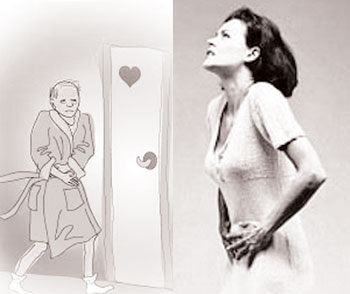Urinary incontinence is a common problem
Urinary incontinence is the accidental leakage of urine. At different ages, males and females have different risks for developing this problem. In childhood, girls usually develop bladder control at an earlier age than boys, and bedwetting or nocturnal enuresis is less common in girls than in boys. However, adult women are far more likely than adult men to experience urinary incontinence because of anatomical differences in the pelvic region and the changes induced by pregnancy and childbirth. Nevertheless, many men do suffer from incontinence. Its prevalence increases with age, but urinary incontinence is not an inevitable part of aging. Urinary incontinence is a treatable problem. To find a treatment that addresses the root of the problem, one needs to talk with the health expert. There are various forms of urinary incontinence. Among them there is stress incontinence, which is the involuntary loss of urine during actions such as coughing, sneezing, and lifting. This is due to exertion of abdominal pressure on the bladder Urge incontinence, which is the involuntary loss of urine following an overwhelming urge to urinate that cannot be halted. Overflow incontinence, which is the constant dribbling of urine usually associated with urinating frequently and in small amounts. For the urinary system to do its job, muscles and nerves must work together to hold urine in the bladder and then release it at the right time. Any disease, condition, or injury that damages nerves can lead to urination problems. Nerve problems can occur at any age. Men who have had diabetes for many years may develop nerve damage that affects their bladder control. Stroke, Parkinson’s disease, and multiple sclerosis all affect the brain and nervous system, so they can also cause bladder emptying problems. Overactive bladder is a condition in which the bladder squeezes at the wrong time. The condition may be caused by nerve problems, or it may occur without any clear cause. A person with overactive bladder may have any two or all three of the symptoms such as urinary frequency. This is urination eight or more times a day, or even more than two times at night. There is urinary urgency which is the sudden, strong need to urinate immediately. Urge incontinence which is urine leakage that follows a sudden, strong urge to urinateAnother important factor to mention here is the spinal cord injury that may affect bladder emptying by interrupting the nerve signals required for bladder control. Another common underlying problem in male population is prostate problems. The prostate is a male gland about the size and shape of a walnut. It surrounds the urethra just below the bladder, where it adds fluid to semen before ejaculation. The prostate gland commonly becomes enlarged as a man ages. This condition is called benign prostatic hyperplasia or benign prostatic hypertrophy. As the prostate enlarges, it may squeeze the urethra and affect the flow of the urinary stream. The lower urinary tract symptoms associated with the development of this problem rarely occur before age 40 years. The symptoms for people suffering from this condition vary, but the most common ones involve changes or problems with urination such as a hesitant, interrupted, weak stream; urgency and leaking or dribbling; more frequent urination, especially at night; and urge incontinence.Problems with urination do not necessarily signal blockage caused by an enlarged prostate. Unlike men, women do not usually have urinary hesitancy and a weak stream or dribbling. Ends

